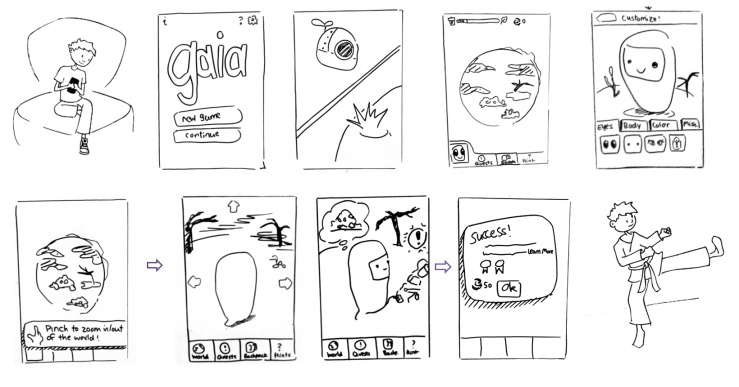Teaching Kids Sustainability Through Virtual Worlds
Fall 2011
My team sought to teach children from grades 3-5 about sustainable practices through a mobile game called Gaia. By combining quests within the game with real world tasks,we tried to make engaging in sustainable practices fun and informative. By “helping” a character trying to revive his polluted, dying planet in the game by remembering to engage in activities that conserved energy and water and promoting the sharing and reuse of personal items, we hoped to reinforce sustainable habits in kids, while giving them incentives by immersing them within an engaging narrative that changed in realtime based on the childs progress and actions.
The idea emerged after a long period of research and idea prototyping. We conducted site surveys, including a local visit to the Children’s Museum in Pittsburgh to study children’s engagement with the interactive exhibits there, and interviews with researchers involved at the Museum and professors studying informal learning in kids. The exploratory research allowed us to hone in on the general concept for an immersive, narrative driven game with the in game scoring system tied to real world tasks that would facilitate learning and understanding.


After synthesizing our research, we developed personas and scenarios exploring several ways in which the key game mechanics would work, and went through several iterations of wireframing and user interface style development before finally settling on an aesthetic that we felt worked. The final demo showed off the opening cutscene and a single level of the game showing the interactions between the in game characters and the world.


